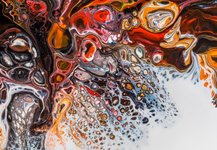Sublime
An inspiration engine for ideas

Victor Cary
@vhcary
By altering the ingredients of the idea menu they are exposed to, we might, in turn, minimize the dangerous inputs to the processes of belief and network updating.
Jessica C. Flack • Worlds Hidden in Plain Sight: The Evolving Idea of Complexity at the Santa Fe Institute, 1984–2019 (Compass)
In the 1930s, Max Kleiber, a Swiss agricultural biologist, observed that, across mammal species, from shrews to elephants, the energy required to maintain basic metabolic function is closely correlated with an organism’s body size.
Jessica C. Flack • Worlds Hidden in Plain Sight: The Evolving Idea of Complexity at the Santa Fe Institute, 1984–2019 (Compass)
Green Science
Carola Romero Fernandez • 8 cards
Biology
Mo Shafieeha and • 4 cards
Bernhard Palsson, a biologist at the University of California, San Diego, has overseen the construction of a model of E. coli’s metabolism.
Carl Zimmer • Microcosm: E. coli and the New Science of Life
Security Check - Orion Magazine
orionmagazine.org